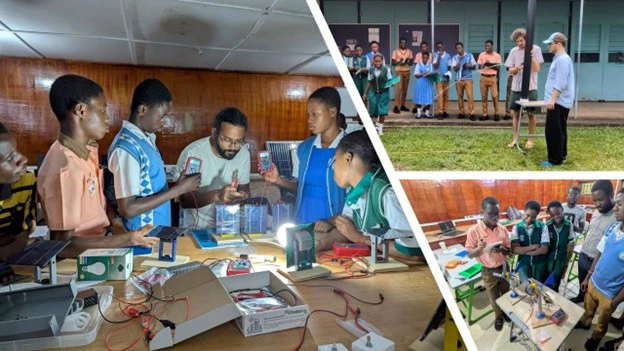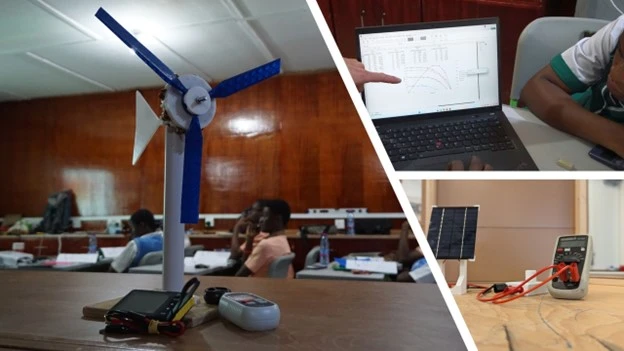What started just two years ago as a small student project at the Technical University of Munich (TUM), Chair of Renewable and Sustainable Energy Systems, has now grown into something with real impact. Together, Dr. Anurag Mohapatra, Michael Erhart, and Maximilian Hock launched EduGrid with a simple but powerful idea: renewable energy education should be accessible, practical, and open to everyone. EduGrid follows a teach-the-teacher approach, with open-source learning materials and 3D-printed hands-on experiments that bring renewable energy to life. Developed by TUM students through their coursework, these tools help teachers and learners carry the benefits of renewable energy from the classroom into the real world.
This vision came to life in Kumasi, Ghana, in March 2025, when Anurag, Michael, and Max visited the Kwame Nkrumah University of Science and Technology (KNUST) to run a workshop on renewable energy with local school students.
The event showed just how powerful hands-on learning can be, with students actively engaged and highly motivated throughout the sessions. It also reflected the strength of the partnership between TUM and KNUST, which since 2018 has grown into a close and lasting collaboration—laying the groundwork for joint initiatives like EduGrid.
The workshop was made possible thanks to the support of the Brew-Hammond Energy Center, led by Prof. Gabriel Takyi, with the active involvement of Dr. David Ato Quansah. Their expertise and dedication helped create an inspiring learning experience for everyone involved.
Students from three schools in and around Kumasi came together to explore the basics of solar, wind, and hydropower. Using 3D-printed experiment kits, they built their own small setups and ran real experiments.
Take solar energy, for example: the students measured the current-voltage (U-I) curve of photovoltaic (PV) cells. They plotted the results, seeing firsthand how solar modules behave under different conditions. This not only helped them understand the science but also gave them insights they can carry into the real world, for instance, when installing or optimizing PV systems.
Hydropower was explored by assembling a generator with a Pelton turbine, where students discovered how different water head heights change voltage and frequency. Wind experiments let them try various rotor blade designs, showing the direct link between engineering choices and energy output.
Along the way, students picked up practical skills too, learning how to use multimeters and oscilloscopes, and gaining confidence in reading, measuring, and interpreting real data.
The workshop didn’t stop at individual technologies. A key part was looking at the bigger picture: integrating renewable energy into the grid. Students discussed the pros and cons of solar and wind power, why balancing generation and consumption matters, and how tools like storage and flexible demand can help.
This connected their hands-on experiments to the real challenges of building stable, sustainable energy systems.
The Ghana workshop was more than just a single event for us. It showed that the EduGrid approach works and was a success in itself. It sparked momentum to continue and expand. Building on this, EduGrid is now being introduced in German high schools.
PV lessons are designed according to the 8th and 11th-grade physics curriculum supporting German high schools. The initiative is also gaining ground internationally, with workshops planned in Latin America and India. Starting in Uruguay and a partner city in India. Because all materials are open-source, the experiments and teaching concepts from Kumasi and beyond can be shared, adapted, and used worldwide. More information and interactive learning tools can be found at edu-grid.org.
EduGrid may have started as a student idea. Still, the Kumasi workshop showed how much potential it has to empower the next generation. By combining global partnerships with local passion, EduGrid is helping young people not only learn about renewable energy but also see how they can play an active role in shaping a sustainable future.


